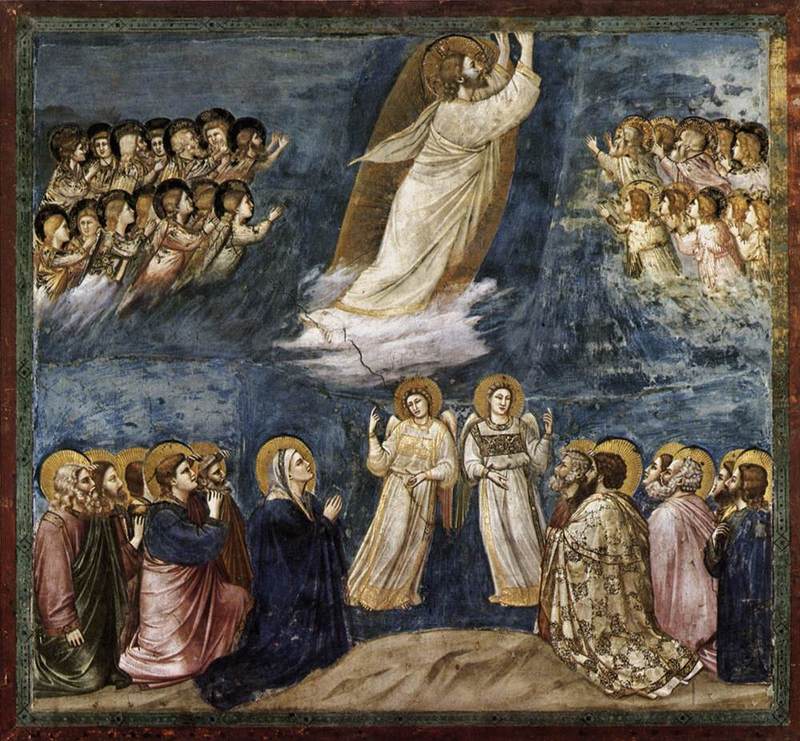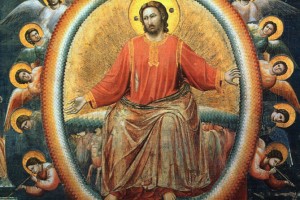Following a day of worship, Easter egg hunts and family dinners (the odd combination of which deserves a blog post all its own), you might be ready to dive back into your weekly routine. But don’t miss what happened after Easter. In the rush to return to normalcy, take time to reflect on the rest of the tale. After all, a story that stars a risen Savior is far from finished. Here’s a rundown of the days following Jesus’ resurrection:
Matthew
After hearing news of the empty tomb, the chief priests and elders tell the soldiers who guarded Jesus’ tomb to stick with the story: the disciples crept in while the soldiers slept and stashed the corpse somewhere. Meanwhile, Jesus meets his disciples on a mountain, where some worship and some doubt. Jesus tells them to make disciples of all nations, promising he’d be with them until the end.
My thoughts:
- If I were a soldier, rather than tell people I fell asleep on the job, royally blowing the biggest assignment of my career, I’d rather tell people that the man whose grave I guarded came back to life, that angels showed up and rolled the stone away, that the ground quaked beneath my feet, and that I fled. Instead, like Judas, they accepted the money and betrayed the truth.
- Matthew tells us that even though they had seen and spoken to the risen Savior, some people still doubted. What an amazing statement! It affirms what we already know: men are spiritually blind until the Holy Spirit opens their eyes. Even seeing God in the flesh, freshly raised from the dead, can’t convince men whose hearts are still made of stone.
Mark
Mark’s account doesn’t even make it past Easter morning. When the two Marys discover the empty tomb, a man in white tells them that Jesus has risen. He instructs them to share the good news with the disciples, but the women are afraid and stay silent. That’s where it ends. Later, unsatisfied scribes filled in the blanks with an epilogue that completes the resurrection story, punctuating it with the Great Commission and the Ascension.
My thoughts:
- If we didn’t have three other gospel accounts, the rest of the New Testament, and two-thousand years of Church history, I might be concerned with Mark’s original ending. As it stands, we do, therefore I love it. I savor the suspense, the “to be continued” element. More importantly, the story’s happy ending isn’t in knowing the women relayed the news of Jesus’ resurrection… but in Jesus’ resurrection! The reader can rest satisfied knowing that Jesus conquered sin and death. Isn’t that happy enough?
Luke
On Easter day, the incognito Christ walks to Emmaus. On the road, he meets two men trying to wrap their heads around the weekend’s events. Surprised by their ignorance, Jesus explains the story of the Messiah, from Moses to modern day, and accepts an invitation to stay with the men and break bread with them. When their eyes are opened and they recognize Jesus, he vanishes, appearing soon thereafter, ghost-like, among the disciples. The Savior eats seconds with the disciples and explains how the Law and Prophets—even the Psalms—have been fulfilled in him. He leaves them with a blessing before ascending to heaven.
My thoughts:
- Although Matthew is traditionally known as the gospel to the Jews, I like how Luke, in the last chapter of his first account (the second is the Book of Acts), ties everything back to the Old Testament, assuring his readers that Jesus is indeed the center of Scripture’s salvation story. I like to imagine Luke interviewing the two men from Emmaus as they recount the Savior’s story, from “In the beginning” onward.
John
Two times in the week following Easter, Jesus walks through locked doors and drops by for surprise visits to the disciples. On the second occasion, Thomas becomes a believer after putting his hands in the crucifixion wounds. Some time later, Jesus shows up on the shore while his disciples are fishing and, still in the business of miracles, guarantees a great catch. Peter is so thrilled to see his Savior he throws himself into the water, leaving the others to haul in the fish. After Jesus makes breakfast, he asks Peter three times if he loves him (perhaps hinting at Peter’s three denials) and asks the disciple to “feed his sheep” before cryptically prophesying the nature of his death. Jesus then gives a final word concerning the disciple whom he loves (presumably John, but check out John Dunne’s post for another opinion). The gospel ends with a word about the countless other untold tales of Jesus’ ministry.
My thoughts:
- Doubting Thomas. What a lousy name to be stuck with.
- John’s gospel gives many details about Jesus’ post-resurrection life, as we see him interacting, cooking and eating. There’s something strangely calm about the risen Lord. Perhaps that’s because his work was done; he had satisfied the wrath of God and would soon be seated at his Father’s right hand. Although he kept his physical body, it was now free from the curse, and from what we can tell, possessed new properties that allowed him to travel swiftly from one place to the next, maybe even walk through walls.
- Despite the details John’s gospel provides on Jesus’ post-resurrection life—scenes of Jesus interacting, cooking and eating with his disciples—we know little about what he did when he wasn’t with them. Luke, in his sequel, tells us that Jesus remained on earth forty days (Acts 1:3). What was he doing? Where did he go? Maybe that’s why John said there aren’t enough books in the world to describe the wonders Jesus did while on earth. What wonders are to come!
We could talk about Acts. We could talk about Paul. They all have something to say about Christ’s ministry after his resurrection. But the point is this: Easter is never over. Because Jesus lives, we have reason to celebrate the resurrection every day. What do you take away?





1 Comment
Leave your reply.